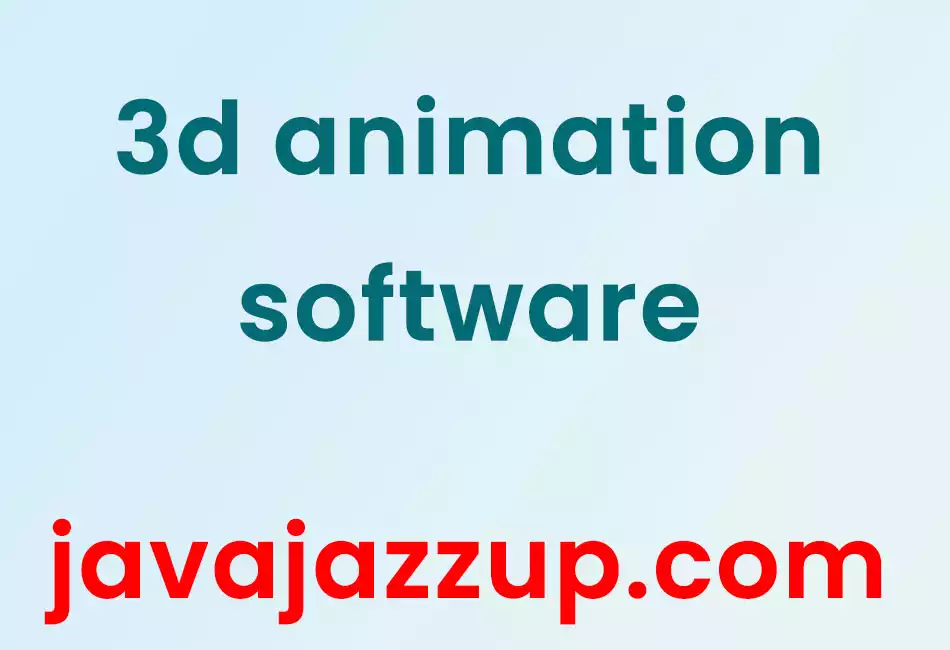3d animation software
3d animation software
3D Animation Software: Unleashing Creativity in a Virtual World

In today's digital age, 3D animation has become an integral part of various industries, including film, gaming, advertising, and architecture. It allows creators to bring their imagination to life, captivating audiences with stunning visuals and lifelike characters. Behind these mesmerizing animations lies powerful software that enables artists to unleash their creativity and push the boundaries of what is possible. In this article, we will explore the world of 3D animation software, its features, and its impact on the creative process.
What is 3D Animation Software?
3D animation software is a tool that empowers artists to create three-dimensional computer-generated imagery (CGI) and animations. It provides a virtual canvas where artists can model, texture, rig, animate, and render objects and characters in a three-dimensional space. These software applications offer a wide range of tools and features that streamline the animation process, making it more accessible and efficient for artists of all skill levels.
The Evolution of 3D Animation Software
The history of 3D animation software dates back to the 1970s when pioneers like Ed Catmull and Fred Parke developed the first computer-generated 3D animation. However, it wasn't until the 1990s that 3D animation software became commercially available and accessible to a broader audience. The introduction of software like Autodesk's 3D Studio Max and Alias' Maya revolutionized the industry, enabling artists to create complex and realistic animations.
Today, there is a wide range of 3D animation software available, each with its unique features and capabilities. Some of the most popular software in the industry include Autodesk Maya, Blender, Cinema 4D, and Houdini. These software applications have evolved over the years, incorporating advanced features like physics simulations, fluid dynamics, and character animation tools, empowering artists to create breathtaking animations.
Features of 3D Animation Software
1. Modeling: 3D animation software provides a set of tools for creating 3D models of objects, characters, and environments. Artists can sculpt, extrude, and manipulate polygons to create intricate and detailed models.
2. Texturing: Texturing tools allow artists to apply realistic materials and textures to their 3D models. They can create lifelike surfaces, add colors, patterns, and even simulate materials like metal, glass, or fabric.
3. Rigging: Rigging is the process of creating a digital skeleton for characters, enabling them to move and deform realistically. 3D animation software offers tools for creating bones, joints, and controls that allow artists to animate characters with ease.
4. Animation: Animation tools are at the core of 3D animation software. Artists can create keyframes, define motion paths, and manipulate objects and characters to bring them to life. These tools often include features like inverse kinematics, motion capture integration, and facial animation systems.
5. Lighting and Rendering: Lighting and rendering tools allow artists to set up virtual lighting environments and render their animations into high-quality images or videos. They can control the intensity, color, and direction of light sources, as well as apply advanced rendering techniques like global illumination and ray tracing.
The Impact of 3D Animation Software on the Creative Process
The advent of 3D animation software has revolutionized the creative process, empowering artists to explore new realms of imagination and storytelling. Here are some ways in which 3D animation software has impacted the industry:
1. Increased Efficiency: 3D animation software automates many time-consuming tasks, allowing artists to focus more on the creative aspects of their work. Features like rigging systems and physics simulations simplify complex processes, saving artists valuable time and effort.
2. Realistic Visuals: With advanced rendering capabilities, 3D animation software enables artists to create stunningly realistic visuals. They can simulate realistic lighting, shadows, and textures, resulting in animations that are indistinguishable from reality.
3. Collaboration and Iteration: 3D animation software facilitates collaboration among artists, animators, and other team members. It allows for seamless sharing of files, feedback, and revisions, enabling a more iterative and collaborative creative process.
4. Accessibility: The availability of various 3D animation software options has made the field more accessible to aspiring artists. Many software applications offer free or affordable versions, allowing beginners to learn and experiment without significant financial barriers.
5. Versatility: 3D animation software is not limited to a single industry or application. It is used in film, gaming, advertising, architecture, and even scientific visualization. Its versatility allows artists to explore different creative avenues and expand their skill set.
Conclusion
3D animation software has transformed the way we create and experience animations. It has opened up new possibilities for artists, enabling them to push the boundaries of their imagination and create breathtaking visuals. With its powerful tools and features, 3D animation software has become an essential tool for artists in various industries. As technology continues to advance, we can only expect further innovations in 3D animation software, unlocking even more creative potential in the virtual world.
Ads